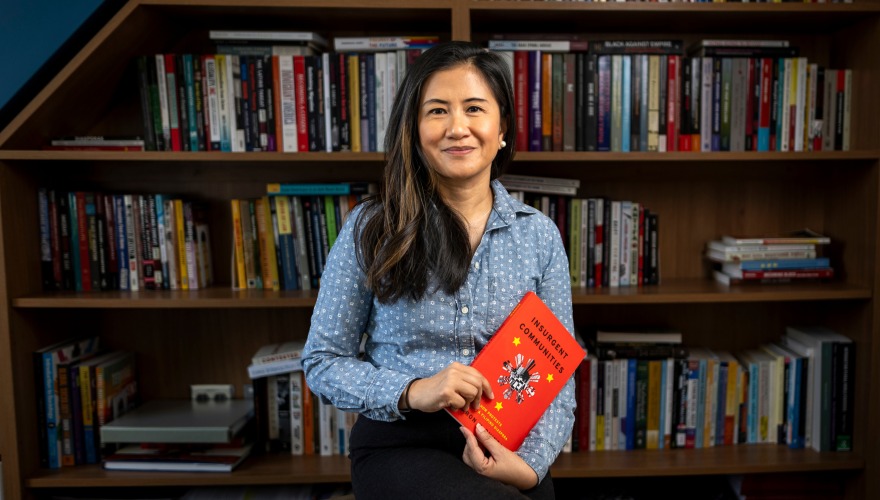Building Community through Protest
New Book Explores the Filipino Diaspora

At the height of the anti-globalization movement, Sharon Quinsaat was conducting research on protests against the World Trade Organization. “I was also involved in them as an activist,” she says.
Participating in the protests sparked her interest in protest and social movements, and she began to think about how protests can bring communities together, particularly among immigrants.
“Joining others in protest offers a sense of community,” Quinsaat says. “It is affirming to think that you are not alone, and being a part of a community that shares your fundamental concern can be uplifting.”
The subject is explored in Quinsaat’s first book, Insurgent Communities: How Protests Create a Filipino Diaspora, which looks at how protest allows migrants to form a community that extends across borders. Just published by The University of Chicago Press, the book is also available on Amazon.
A native of the Philippines, Quinsaat came to the United States in 2008 for graduate school as a Fulbright scholar. From the beginning, she was drawn to research, particularly on protests and social movements.
As an immigrant herself, she was fascinated by the kind of activism that migrants get involved in. “My book looks at Filipinos in the U.S. and the Netherlands,” Quinsaat says. “I got more and more interested in the relationship between protests among immigrants on issues that they are facing here in the U.S. and the issues at home. That led me to think about diaspora more broadly.”
Quinsaat says that participating in protests helps migrants become more knowledgeable about politics here, even if their primary interests are in their home countries. “It’s kind of like their socialization into U.S. politics,” she explains. “It’s a way for them to learn about how it is to be involved politically, no matter what, whether it’s through formal politics or just organizing through your own community.”
Quinsaat, an associate professor of sociology, hopes her book will appeal to a broad audience. “It’s not just for people who have a PhD,” she explains. “I wrote it in such a way that it is accessible.”
The book is especially relevant now, when the subject of immigration is a major issue in many countries worldwide. “The stories that I have in the book really capture some of the complexities of immigration as people experience them,” Quinsaat says. “I think that my book really portrays that in a way that is multi-layered and nuanced, and also very engaging because it’s about storytelling as well.”
She adds, “When they migrate here, it doesn’t mean that they automatically forget their home country.”
Quinsaat spent a lot of time with of her research subjects, whom she was careful to treat with the respect for their feelings and their privacy. In the process, she forged close relationships with many of them, and was invited into their real lives. “I attended so many kids’ birthdays,” she says. “And a picnic.”
Quinsaat conducted her research in three countries — the United States, the Philippines, and the Netherlands. This required multiple trips abroad where living expenses were often steep. Fortunately, she received support from several grants to fund her work, including a National Science Foundation Doctoral Dissertation Improvement Grant (SES-1434119), the National Endowment for the Humanities’ Summer Stipend, the American Philosophical Society’s Franklin Grant, the American Association of University Women’s American Postdoctoral Fellowship, and Grinnell’s Harris Fellowship, which allowed her to go on leave for one year with salary.


